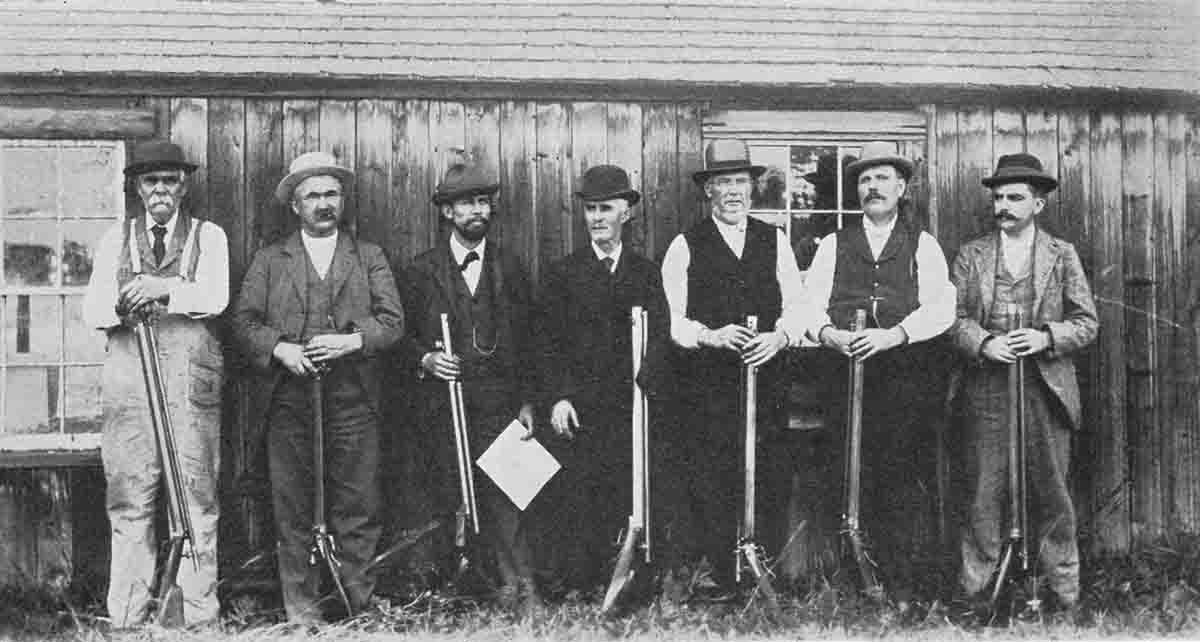
Rest shooters at the September 2, 1896, match held at Vernon, Vermont by the National Rifle Club. (Left to right): R.C. Cressy, M.H. Whitley, H.M. Pope, D.H. Cox, L. Park, C.F. Fletcher, A.D. Spencer. From The Muzzle-Loading Caplock Rifle by Ned H. Roberts.
What we refer to as “benchrest” shooting today was simply called “rest shooting” back in the days of Horace Warner and William Lowe, who were both noted riflemen of the late 1800s. Organized rest shooting got its start in 1858 with the formation of the National Rifle Club at Vernon, Vermont. Prior to this there wasn’t really any formalized benchrest competition with the notable exception of “over-the-log” or “plank” matches shot with round ball or picket rifles. With the formation of the National Rifle Club and its stated goal of pursuing the ultimate in accurate rifle shooting, many other clubs, both in the East and West, were formed for the express purpose of rest shooting competition.
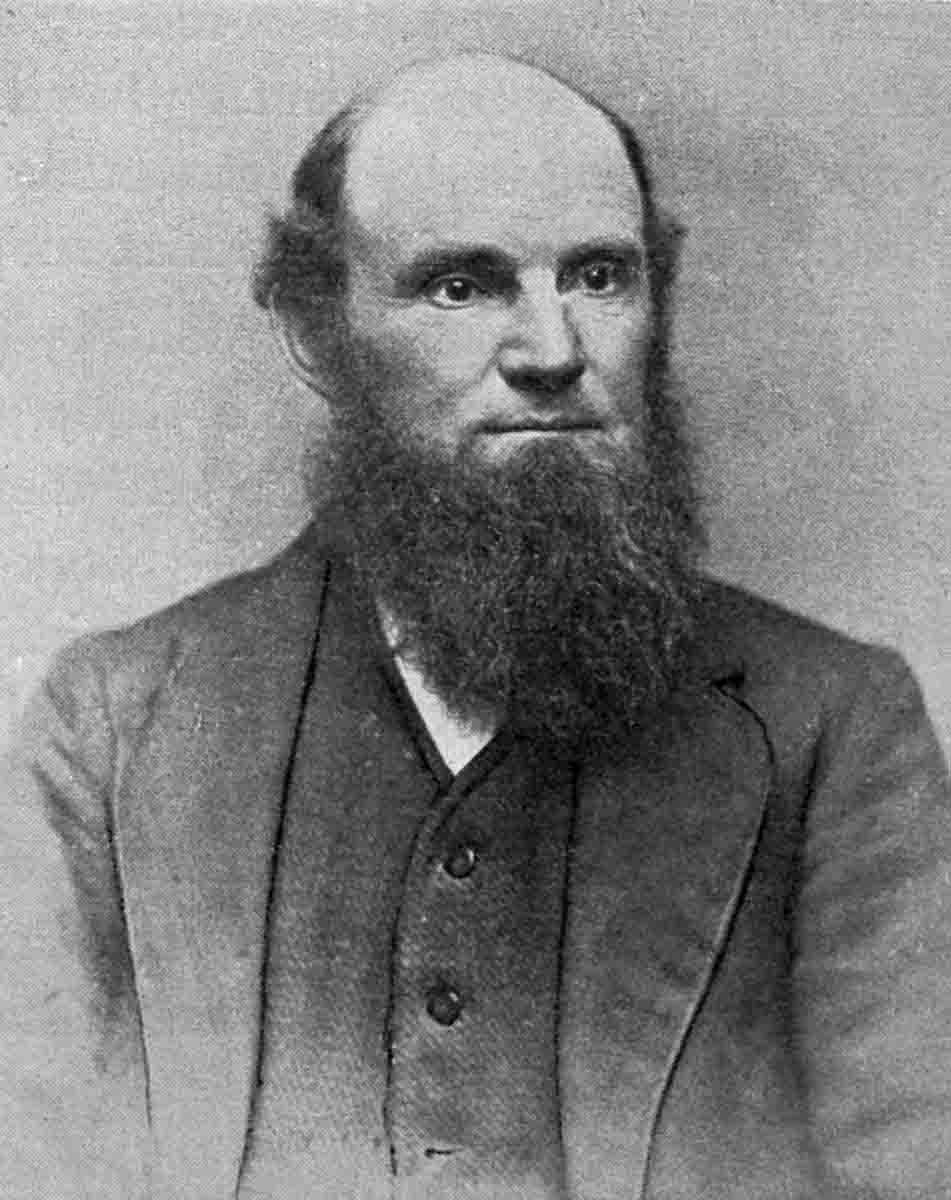
Norman S. Brockway, long-time secretary of the National Rifle Club, top competitor and renowned gunsmith.
What was a typical rest match? There were remarkably few restrictions as to rifles and rests although many clubs had their own set of rules, most regarding rifle weight and type of rest. Rifles over 30 pounds were frequently handicapped and rests at the muzzle only were sometimes specified. A typical match would allow the use of any sight, iron, tube or telescopic, a 30-pound handicap weight for rifles, double rest, string measure, and time rules. Machine rests were commonly allowed or sometimes the rifle was required to be held to the shoulder. A variety of targets were used, sometimes the German Ring or Standard American when string measure was not going to be used for scoring. Not all matches used time rules, and allowable rests varied from club to club. The main focus of the competitions was extreme accuracy. Therefore, most clubs employed string measure from a marked center.
An explanation is probably due for some of the above-mentioned terms. “String measure” was the measuring of the distance from the center of the target to the center of each bullet hole in a group of shots. The aggregate of those measurements comprised the “string.” The shooter with the shortest string won the match. This is a very precise way of measuring shot placement, and requires that all shots be as close to center as possible, unlike many modern-day benchrest matches that measure only group size, no matter where the shots fall on the target. String measure also has the added benefit of being able to be used with any target that has a center clearly marked and results in very few ties. As already mentioned, some clubs used the German Ring target for their rest matches as well as the Standard American target. By and large, string measure was the most common method of tallying scores.
“Double rest” generally referred to supporting the rifle in two places, usually the barrel and the buttstock or sometimes just on the barrel itself. Some matches required that only the hand could support the buttstock with the barrel being rested. “Machine rest” was generally defined as one that supported the rifle completely, was adjustable mechanically for windage and
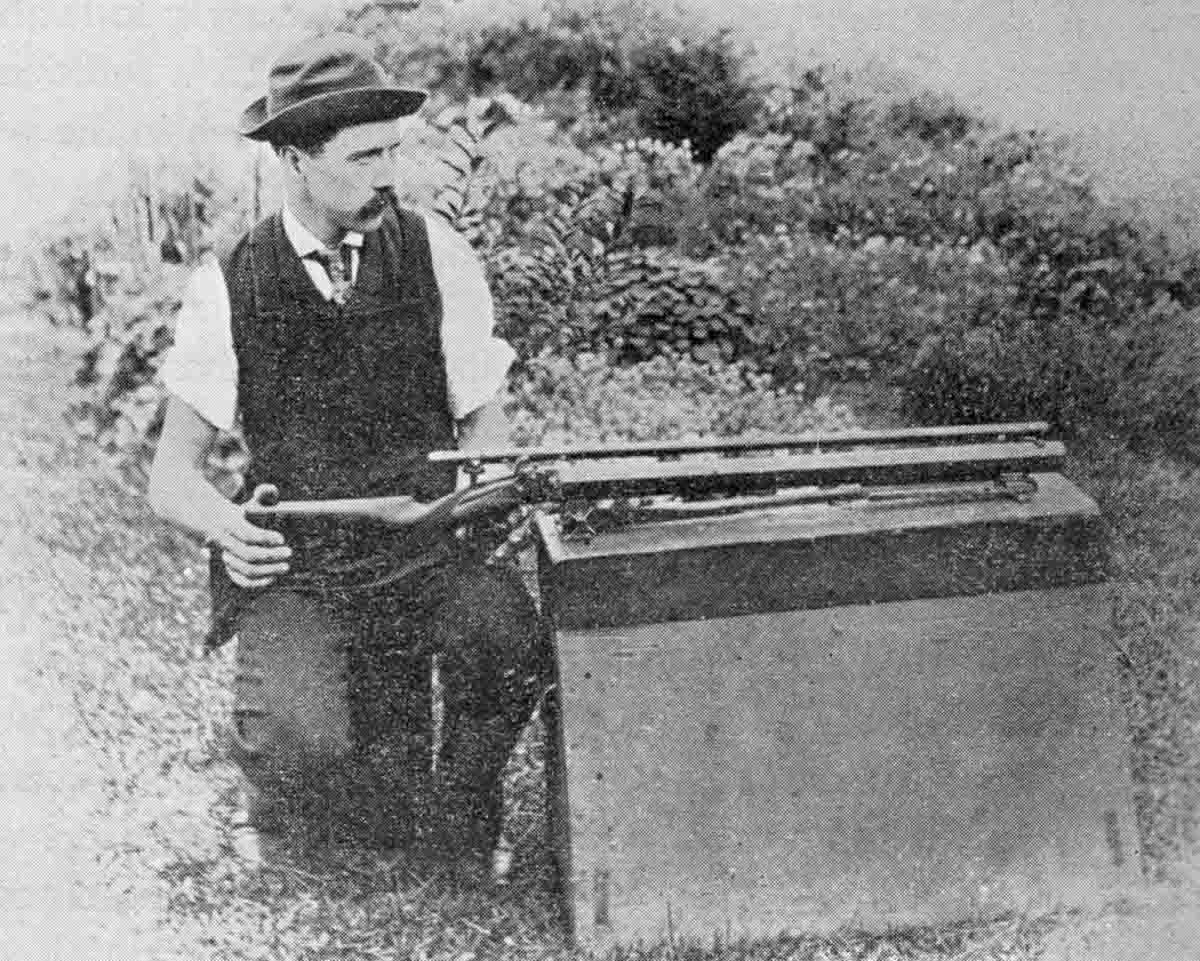
William V. Lowe shooting his Warner rifle from machine rest.
elevation, and the front and rear rests were connected into one unit. Again, there were variations on these definitions from club to club.
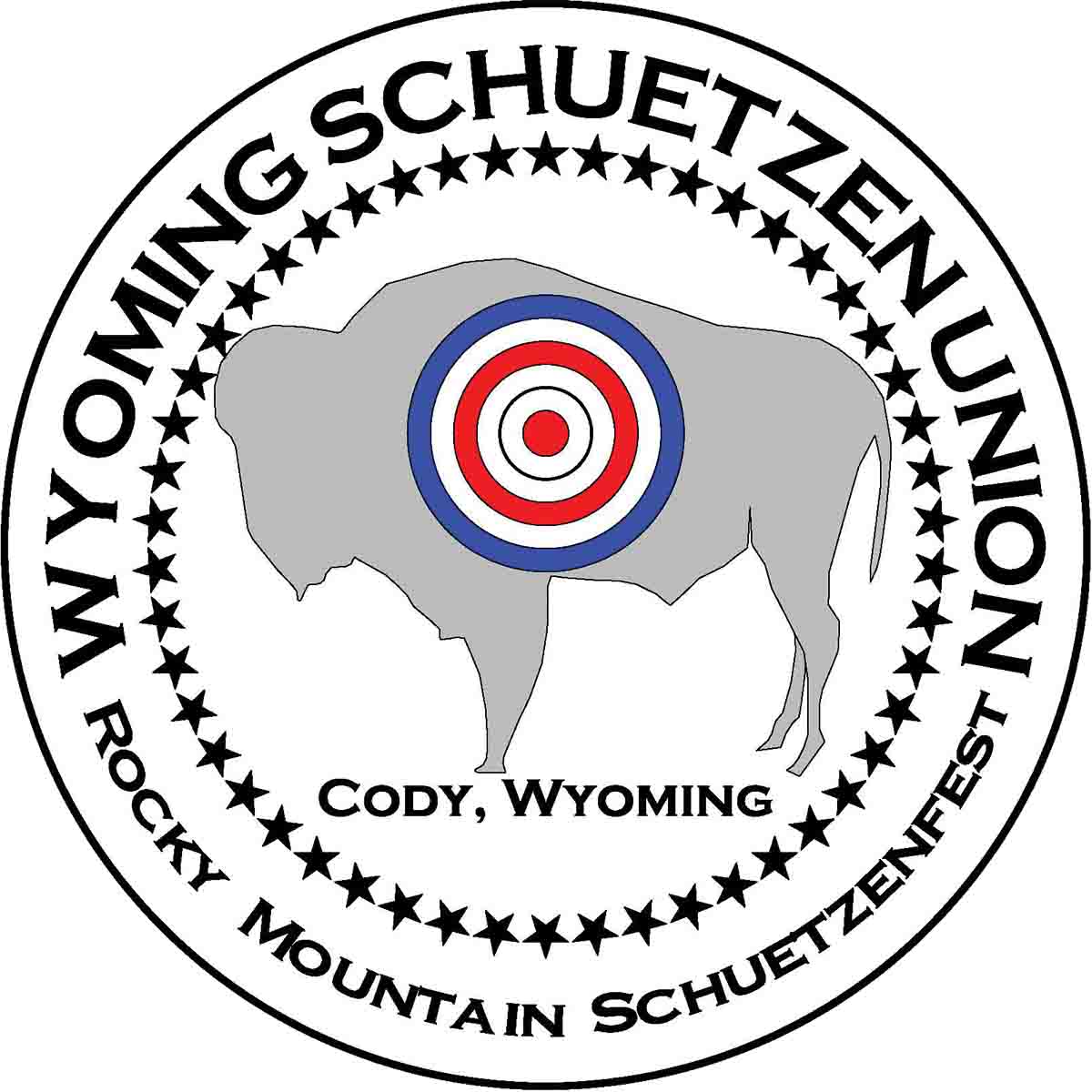
“Time rules” is something that is unfamiliar to most modern-day shooters. Time rules were developed to give all shooters the same amount of time to prepare their rifle for the next shot, as well as making sure that all shooters shot in roughly the same conditions. Because the muzzleloading rifle typically used in the matches took from two to five minutes to clean and load between shots, typical time rules specified, “Five minutes to load, three minutes to shoot” or variations on that theme. Shooters using a breechloader with fixed ammunition had no advantage from increased rate of fire over the slow-to-load muzzleloaders. This may seem strange to us now, but remember that the focus of the rest match was accurate shooting, not sustained rates of fire. Also, when competitors are required to shoot in the same conditions it is much more of a test of a rifleman’s ability to accurately judge wind, mirage and light. Time rules kept the shooters on basically the same footing regardless of the type of rifle they were using.
How good were some of the expert rest rifle shooters? Horace Warner is a name that many current-day rest rifle shooters know well, both as an expert, old-time riflemaker and an excellent shot. An excerpt from the weekly publication The Rifle will give some idea:
“The quarterly meeting of the Nypano Union Shooting Club was held at Falconer Crossing near Jamestown, N.Y., January 11,12, 13 and 14, 1887. Conditions of the match being, distance 40 rods, string measure, parties using guns over 30 pounds, as fired, have 1-10th of an inch added to their string for each additional pound. Rifle shot from the shoulder, with no support under the breech except their hands; telescope sights; strings to consist of ten shots.
First day. Owing to delay of parties arriving, the match was not called in the practice-score shot.
Horace Warner, of Syracuse, scored the shortest string which measured eight inches.
Second-day. Match not called until about noon. Four strings shot: 1st, 2nd and 3rd string won by Horace Warner.
Third day. Match called at noon. Four strings shot, Mr. Warner making the shortest string in each match, strings ranging from 6½ to 9 inches and a fraction.
The fourth day the matches were not called, the contest being abandoned, the result of the matches being a complete victory for Mr. Warner. The rifle shot by him was .37 calibre, and weighed 19 pounds as shot, it being the lightest rifle in the contest.”
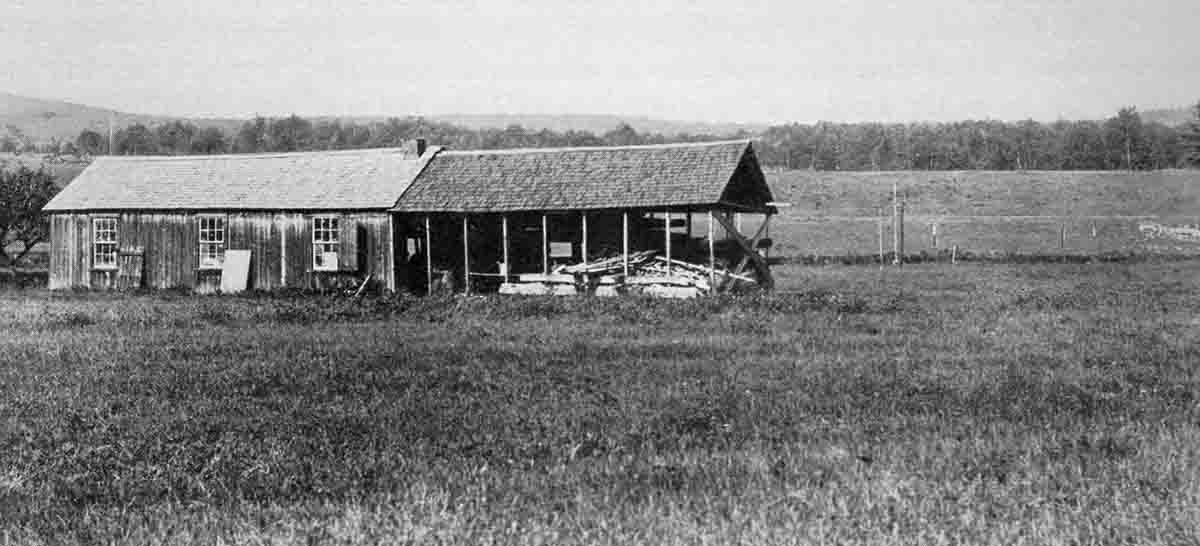
The range and shooting house of the National Rifle Club in Vernon, Vermont. From The American Rifleman magazine.
In recent times, the Wyoming Schuetzen Union has “restarted” the National Rifle Club to benefit those members interested old-style rest rifle shooting and numerous matches have been held at affiliated clubs. The rules have been posted on the union’s website (wyomingschuetzenunion.com) and reflect the average requirements and restrictions commonly encountered at a match governed by the National Rifle Club of old. Probably the best thing about the National Rifle Club is it gives us a connection to our shooting past and provides us with old records to measure our current performance against. With more and more interest in benchrest shooting within the single shot world, reviving and invigorating the National Rifle Club makes perfect sense.
So, grab your favorite bench rifle and see if you could have given Horace Warner or Norman Brockway a run for his money. Don’t even bother looking at the old records unless you can turn in 10-shot strings of under 7 inches. A good string at 40 rods (220 yards) will run an inch a shot, but most of the really expert old-timers would be down around the six-inch mark. It’s fun, challenging and certainly educational. What more could one ask of a match?





.jpg)
.jpg)
.jpg)


